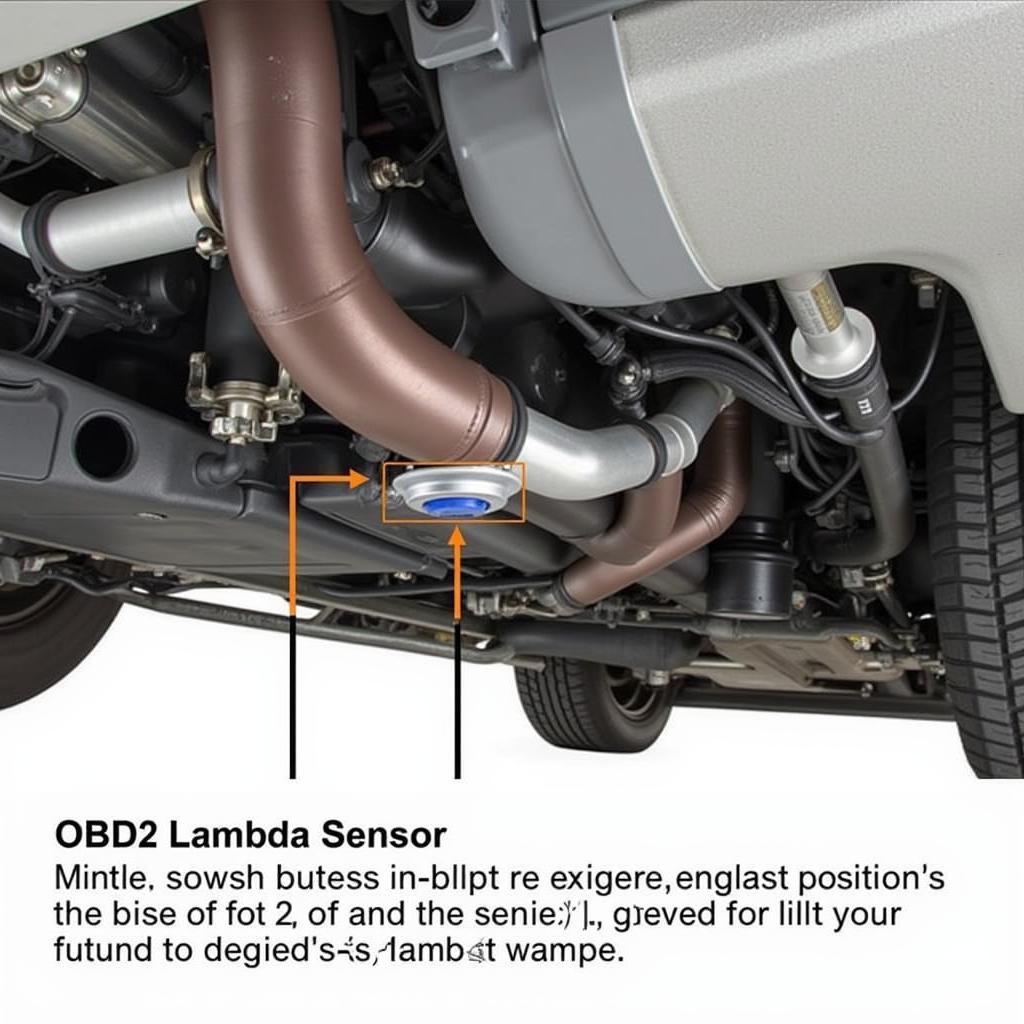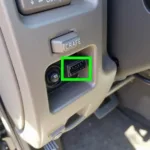The OBD2 lambda sensor, also known as an oxygen sensor, plays a crucial role in ensuring your vehicle’s engine operates at peak performance and fuel efficiency. This comprehensive guide delves into the intricacies of OBD2 lambda sensors, providing you with valuable insights into their functionality, importance, and common issues.
What is an OBD2 Lambda Sensor?
An OBD2 lambda sensor is a small, electronic device typically located in the exhaust manifold or exhaust pipe. Its primary function is to measure the oxygen content in the exhaust gases exiting the engine. This information is then relayed to the Engine Control Unit (ECU), which makes real-time adjustments to the air-fuel mixture.
Why is the OBD2 Lambda Sensor Important?
The OBD2 lambda sensor is essential for maintaining the optimal air-fuel ratio, which is crucial for:
- Optimal Engine Performance: A balanced air-fuel mixture ensures complete combustion, leading to improved engine power and acceleration.
- Fuel Efficiency: The correct air-fuel ratio minimizes wasted fuel, contributing to better gas mileage and reduced emissions.
- Reduced Emissions: A properly functioning lambda sensor helps minimize harmful pollutants released into the atmosphere, such as carbon monoxide and hydrocarbons.
How Does an OBD2 Lambda Sensor Work?
Lambda sensors utilize a unique electrochemical process to measure oxygen levels. The sensor contains a ceramic element coated with zirconium dioxide, which generates a voltage based on the difference in oxygen concentration between the exhaust gases and the outside air.
- Rich Mixture: When the exhaust gases contain a high concentration of unburnt fuel (rich mixture), the sensor generates a high voltage signal.
- Lean Mixture: Conversely, a low voltage signal indicates a lean mixture, meaning there is excess oxygen in the exhaust.
The ECU interprets these voltage signals to adjust the fuel injectors, ensuring the air-fuel mixture remains within the optimal range.
Types of OBD2 Lambda Sensors
Modern vehicles often employ multiple lambda sensors:
- Upstream Lambda Sensor: Positioned before the catalytic converter, this sensor primarily monitors the air-fuel ratio and provides feedback to the ECU for adjustments.
- Downstream Lambda Sensor: Located after the catalytic converter, this sensor measures the efficiency of the catalytic converter in reducing harmful emissions.
Common OBD2 Lambda Sensor Problems
Over time, lambda sensors can experience wear and tear, leading to various issues:
- Slow Response Time: A sluggish sensor fails to provide accurate readings in a timely manner, resulting in inaccurate fuel adjustments.
- Sensor Contamination: Deposits from fuel additives, oil, or coolant can contaminate the sensor, affecting its accuracy.
- Sensor Failure: Complete sensor failure can lead to significantly increased emissions, poor fuel economy, and engine performance issues.
Symptoms of a Faulty OBD2 Lambda Sensor
Recognizing the symptoms of a faulty lambda sensor is crucial for prompt diagnosis and repair. Common signs include:
- Check Engine Light: The check engine light is often triggered by lambda sensor issues.
- Reduced Fuel Economy: A noticeable decrease in gas mileage can be a telltale sign.
- Rough Idling or Engine Misfires: An imbalanced air-fuel mixture can cause rough idling or engine misfires.
- Increased Emissions: A faulty sensor can lead to higher levels of harmful emissions.
Diagnosing and Replacing an OBD2 Lambda Sensor
Diagnosing lambda sensor problems typically involves using an obd2 lufi scanner to read the sensor’s voltage readings and check for error codes.
“When diagnosing lambda sensor issues, it’s essential to rule out other potential causes of similar symptoms, such as vacuum leaks or faulty fuel injectors,” advises John Miller, a seasoned automotive engineer at Car Tech Solutions.
Replacing a lambda sensor is a relatively straightforward procedure for experienced DIYers or mechanics. However, it’s crucial to choose the correct sensor type and follow the manufacturer’s recommended installation procedures.
Conclusion
The OBD2 lambda sensor plays a vital role in optimizing engine performance, fuel efficiency, and reducing emissions. Understanding its functionality and common issues empowers vehicle owners to address potential problems proactively. Regular maintenance and timely replacement of faulty lambda sensors contribute to a smoother, more efficient, and environmentally friendly driving experience.
FAQs about OBD2 Lambda Sensors
1. How often should I replace my OBD2 lambda sensor?
While sensor lifespan varies depending on driving conditions and vehicle make, it’s generally recommended to replace them every 60,000 to 90,000 miles.
2. Can I drive with a faulty OBD2 lambda sensor?
While you might be able to drive for a short period with a faulty sensor, it’s highly discouraged. Continued driving can damage other engine components and lead to costly repairs.
3. Can I clean my OBD2 lambda sensor?
While some DIY methods claim to clean lambda sensors, it’s generally not recommended. Cleaning attempts can damage the sensitive sensor components and are unlikely to provide a long-term solution.
4. How can I prevent premature OBD2 lambda sensor failure?
Regular vehicle maintenance, using high-quality fuel and oil, and avoiding harsh driving conditions can help extend the lifespan of your lambda sensor.
5. What is the typical cost of replacing an OBD2 lambda sensor?
The cost varies depending on the vehicle make and model, but you can expect to pay between $100 to $300 for the sensor and labor costs.
Need More Information?
Explore our website for more informative articles on OBD2 scanners, diagnostic tools, and automotive technology. Contact us today for expert advice and assistance with your vehicle’s diagnostic needs. We’re here to help you keep your car running smoothly and efficiently!


